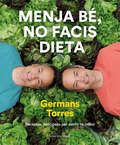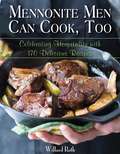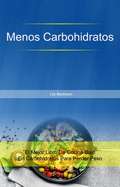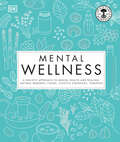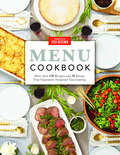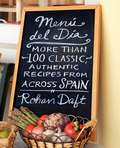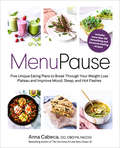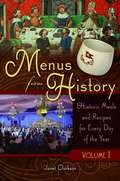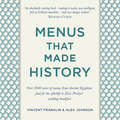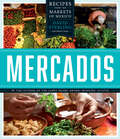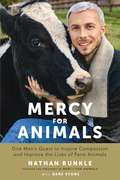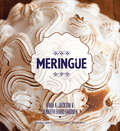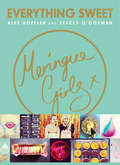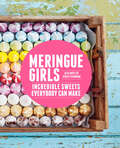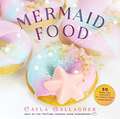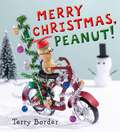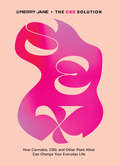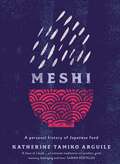- Table View
- List View
Men's Health Workout War: Lose Pounds, Gain Muscle, Destroy Your Opponents (Men's Health)
by Jim CottaTo reach your weight-loss goal, start a Workout War contest with your friends. Studies show that competition and financial rewards motivate people to stick to exercise and diets.Former Los Angeles Lakers strength coach Jim Cotta presents an innovative get-in-shape program in Men's Health Workout War that's virtually guaranteed to help you lose weight. How? By tapping your passion for competition. By starting a "biggest loser-style" weight-loss competition with your friends and colleagues-complete with cash prizes--you'll create fail-proof motivation to reach your fitness goals. This book features a highly effective, 60-day exercise and diet program broken up into quarters and an overtime round. Best of all, it makes fitness fun! Basketball great Shaquille O'Neal, who penned the book's foreword, used a "shirts off" competition against Charles Barkley on national television to spur his own body transformation, and Cotta was his weight-loss coach. That gave Cotta the idea to build a blueprint for grassroots fitness competitions, complete with multiple contest formats and advice on using social media to build excitement. Research proves that camaraderie, competition, and cash incentives are among the best ways to motivate yourself to exercise and eat healthy. Workout War shows you how to use all three to build your best body ever!
Men's Health on the Internet
by Janet M CogganThe best health resources for men on the Net!Men's Health on the Internet puts the best of what the Web has to offer on the subject into one handy volume. Use it as a guide to the best Web sites representing men's health organizations, reliable sites where you can find current health news for men, and much more! This important book evaluates Web sites for content, clarity, and user-friendliness, and shows you how to conduct a focused, subject-specific search.From editor M. Sandra Wood: “It is well known that men are less likely than women to seek health care. Men tend to wait as long as possible to see a doctor about a health problem, making early diagnosis difficult if not impossible. Given the fact that men seem to be more private about their illnesses, the Internet provides an excellent place for them to seek health care information.”Men's Health on the Internet: examines what men need and expect as health care consumers provides an overview of the resources available on the World Wide Web teaches you about search engines and how to use them to find what you're looking for quickly and efficiently points you toward information on cancer--Web-based resources on risk factors, early detection, and treatment brings you reliable resources for information on prostate problems puts you in touch with reliable information men's concerns, including hair loss, high blood pressure (hypertension), heart health, infertility/impotence, and physical fitness includes resources for gay men's health issues increases your awareness of different types of Internet resources, including mailing lists, newsgroups, and real-time communication Information resources on the Internet relating to health issues, from Web sites to newsletters to chat groups, are abundant. Some are much more reliable than others, and there is just as much variety when it comes to ease of use. Take control--use Men's Health on the Internet to sift through the often overwhelming number of related sites to find the information you need!
Menja bé, no facis dieta: Receptes delicioses per sentir-te millor
by Sergio Torres Javier TorresUn llibre pensat per empoderar-te a la cuina. Ha arribat el moment de prendre el control sobre el que mengem i de pas deixar enrere uns quants mites sobre la nutrició. Perquè alimentar-se bé no és difícil, ni avorrit, ni car. Menja bé, no facis dieta és un pla global de vint-i-vuit dies amb propostes que van des de l'esmorzar fins al sopar, recomanacions per tenir el teu rebost ordenat, llistes de la compra setmanals i consells per preparar en un sol cop, i en un parell d'hores, el menú de tota la setmana estalviant temps i esforç. Els germans Torres -Javier i Sergio o Sergio i Javier- van saber des de molt joves que la cuina era la seva passió i van posar tot el seu interès a formar-se amb els millors per fer realitat el seu somni: difondre la bona gastronomia com a font de salut i plaer. Aquest llibre n'és la millor demostració. Per primera vegada en el panorama editorial dos cuiners de prestigi es posen el davantal i reuneixen teoria i pràctica per a una alimentació saludable. Sense dogmes, sense mites, sense dietes miraculoses i amb tot el sabor de la cuina Torres: 100% natural, equilibrada i deliciosa.
Mennonite Men Can Cook, Too: Celebrating Hospitality with 170 Delicious Recipes
by Willard RothWillard Roth is a topnotch cook who grew up in a sprawling Iowa farm family. He has always loved food--growing it, preparing it, eating it. As a Mennonite church leader and journalist, he is as well-known for the dinners he prepares as he is for his sermons or editorials. The man has traveled North America and much of the world, always making notes about the great meals he’s eaten. Then he’s routinely gone home and fiddled around in the kitchen until he can make the dishes he’s loved eating. In this book are recipes inspired by the food made by his Mennonite mother and grandmothers. Other recipes are inspired from the monasteries he’s visited in Ireland and England. There are recipes of the food he’s eaten in Ghana, Jamaica, Cyprus, the Netherlands, India, and Nepal. Roth mixes his keen food memories with his years of experience in the kitchen to create recipes that work for the home cook. Among his Soup recipes are Thai Coconut Shrimp, Chilled Melon Mint, and Hawkeye Corn and Chilies Chowder. His Small Plates recipes include Cheese Grits with Chunky Tomato Sauce, and Corn Leek Bake. Among his Mains are Lemon Turkey Stir-Fry with Pasta, Monastery Cornbread Casserole, Hearty Polenta Florentine, and Pecan Crunch Salmon Bake. Plus Beer-Braised Short Ribs and Balsamic Honey-Glazed Lamb Chops. Cooks will also find Chutneys, Cordials, Rum Sauces, and Relishes. And lots of Vegetables and Salads. You’ll love the tons of Cakes, Candies and Cookies, Pies and Puddings, and Fruit and Frozen Desserts. Willard Roth breathes hospitality and gives us the tools to practice it ourselves, along with unforgettable, easy-to-prepare recipes.
Menopause Reset!: Reverse Weight Gain, Speed Fat Loss, and Get Your Body Back in 3 Simple Steps
by Robert Wolff Mickey HarpazMenopause Reset! is the revolutionary, scientifically-proven program that helps women control the physiological effects of perimenopause and menopause with mind, diet, and exercise solutions that keep blood sugar levels stable and bodies in the fat-burning zone all day long.In the past, controversial hormonal replacement therapy was the only method by which women could positively affect menopausal symptoms. But Menopause Reset! changes all of that. The program specifically regulates blood glucose with food, exercise, and highly effective stress reduction techniques, allowing women to stop and reverse menopausal weight and fat gain. Based on the successful treatment of tens of thousands of women whose life-changing results are included in the book, Dr. Harpaz has put together an easy, 3-step solution that targets the triggers of menopause and its symptoms.Menopause Reset! teaches women all about their metabolic mechanisms: what they are, how they work, and, most importantly, how to manipulate them to achieve sustainable weight loss and get their bodies back!
Menos Carbohidratos: El mejor libro de cocina bajo en carbohidratos para perder peso
by Lily BeckhamPero con la dieta cetogénica, la historia es diferente; usted tiene montones de comidas llenas de nutrientes para elegir con facilidad. Todo lo que necesita hacer es realizar algunos ajustes en cuanto a creatividad, y se encontrará experimentando resultados maravillosos en sólo unos pocos días de comer los alimentos en conjunto. No importa lo bien que lo haga, ya que tiene el recurso adecuado para guiarlo.
Mental Wellness: A holistic approach to mental health and healing. Natural remedies, foods...
by DK Neal's Yard RemediesAn authoritative guide on natural approaches to boost everyday mental wellness and provide extra support when you need it the most.This mental wellness book helps you manage stressful periods as well as other biological factors that impact your mental wellbeing. You&’ll learn how to boost and holistically balance your mental state using natural remedies. Neal&’s Yard Remedies: Mental Wellness is filled with holistic techniques, herbal remedies, essential oils, foods, exercise, lifestyle strategies, and therapies to empower you. This book offers: • The most comprehensive compendium of natural remedies for mental wellness on the market • Chapters on herbal remedies, aromatherapy, foods (including supplements), movement, and alternative therapies • A Symptom Checker which you can explore symptoms and access solutions in the book, based on your current need – jitteriness; anxiety attacks; acute stress; grief; low mood, etc • Approaches and information endorsed by Neal&’s Yard Remedies, world leaders in natural, organic, holistic health. Learn techniques and mantras for uplifting your mood This beautiful, enlightening book explores how things like the environment, the seasons, hormonal shifts, sleep quality, and gut health can influence your mental health. Delve into how lifestyle choices can inhibit your mental health such as caffeine, alcohol, smoking, pollution, screen time, and isolation from the community. This wellness guide offers uplifting and informed information on why you may experience stress and anxiety, providing you with reassurance and strategies to combat these feelings. Explore the science behind natural remedies and use this book as a reliable resource for advice on mindfulness, yoga, breathing exercises, acupuncture, herbal remedies, and reiki.Expand your wellness collectionThis series of wellness books explore natural, holistic remedies to boost physical and psychological health and help you find the best solutions for yourself! Other titles in this series include Neals Yard Remedies Essential Oils and Neal&’s Yard Remedies Complete Wellness.
Menu Cookbook: More than 250 Recipes and 50 Menus That Guarantee Foolproof Entertaining
by The Editors at America's Test KitchenWhen you're entertaining, there's no room for failure--you want your food to deliver on taste and presentation--yet you want the recipes to be approachable enough so that you can enjoy the party, too. Menu planning is hard even for very experienced cooks, but with The America's Test Kitchen Menu Cookbook, we have taken the guesswork out of entertaining. The recipes are built and tested so that they complement each other, and all the logistics have been sorted out.<P><P> You don't need to worry about oven space or temperature issues--we've done all that for you. And to keep the process stress-free, make-ahead instructions are built into individual recipes as well as each menu's game plan.
Menu Del Dia
by Rohan DaftThe menú del día is Spain's equivalent of the prix fixe menu of the bistros of France. On it are good, no-nonsense dishes that are as long on flavor and tradition as they are short on pretension and fuss. Influenced by a unique blend of culinary and cultural influences -- wine from the Romans; rice, cinnamon, saffron, and cumin from the Moors; slow-cooked stews from the Jews; tomatoes, peppers, chocolate, and chilies from the New World -- these are the tastes that have made Spanish cooking as vibrant as it is today. To start, there might be Gazpachuelo, the mayonnaise-enriched shrimp and monkfish soup straight from Mediterranean Málaga, followed by a main course of Fabada, the gloriously sticky stew of pork and white beans from mountainous Asturias, and Bienmesabe ("Tastes good to me!"), the almond, cinnamon, honey, and lemon cream so beloved by the people of Canary Islands. A menú in northerly Navarra, which borders France, might begin with Menestra Riojana, a delicate dish of spring vegetables with extra virgin olive oil, and continue with Pichón Estofado, a robust dish of pigeon stewed with red wine. Arroz con Leche, creamy rice pudding with a burnt-sugar crust, makes a sweet ending.
MenuPause: Five Unique Eating Plans to Break Through Your Weight Loss Plateau and Improve Mood, Sleep, and Hot Flashes
by Anna CabecaMore than 125 detoxifying and hormone-healing recipes to reduce the symptoms of perimenopause and menopause, from the bestselling author of The Hormone Fix and Keto-Green 16 &“Dr. Cabeca shows us how to take charge of our health in midlife, using the power of food to start feeling better—and find optimal weight, improved mood and more energy along the way!&”—Izabella Wentz, PharmD, New York Times bestselling author of Hashimoto&’s Protocol A major hormonal shift in every woman&’s life, menopause heralds a time of new freedoms, potential, and empowerment. But this necessary shift often also brings with it uncomfortable symptoms like brain fog, reduced libido, joint pain, constipation, and hot flashes. And even while eating and exercising as usual, most menopausal women also experience frustrating weight gain—in and of itself a symptom that can make the other symptoms worse. We seldom make the connection between what we eat and how it affects our hormones. But food is a direct hormone regulator, so when hormones shift, we must shift as well. Choosing ingredients wisely is the best way to reduce all your symptoms, including that frustrating weight gain. Drawing inspiration from the cuisines of countries where women experience fewer menopausal symptoms, Dr. Anna Cabeca offers five unique, six-day eating plans that put a &“pause&” on the use of symptom-exacerbating ingredients. Depending on your health goals and the symptoms you&’re experiencing, choose from these five plans: • The Keto-Green Extreme Plan pauses inflammatory foods but includes stomach-soothing alkaline ingredients for an overall reduction in menopause symptoms. • Keto-Green Plant-Based Detox pauses animal proteins to stoke your fat-burning metabolism, ease hot flashes, and reduce brain fog. • The Carbohydrate Pause puts a temporary pause on all carbohydrates and sugar to help you break through a weight loss plateau, sleep better, and combat bloating. • The Keto-Green Cleanse briefly pauses solids to gently restore and energize you at the cellular level, leading to greater energy, less joint pain, and less constipation. • The Carbohydrate Modification Plan is the perfect feasting plan, allowing for the reintroduction of healthy but gluten-free carbohydrates to reduce restriction fatigue and maintain metabolic flexibility. With more than 125 delicious recipes—many of which fit more than just one eating plan—MenuPause is your guide to a more comfortable menopausal transition, and ensures you won&’t go hungry in the process!
Menus From History: Historic Meals and Recipes for Every Day of the Year (Volume I)
by Janet ClarksonWhat did Jane Austen and Abraham Lincoln have for supper? What do menus teach us about people and the societies in which they lived? This work compiles 365 menus from 35 countries and from all sorts of historic occasions. Ranging from a Roman banquet in A.D. 70, to spaceship meals, to Elvis and Priscilla's wedding celebration, the menus offer students and general readers a fun way to learn about significant events and cultures. Each menu includes a brief description of the original historic occasion, plus notes on the dishes and preparations, and instructions from period cookbooks. The book includes a glossary of food terms and names of dishes. To aid in finding specific items, menus are listed chronologically, by country, and by occasion. Clarkson is a culinary historian. Annotation ©2009 Book News, Inc., Portland, OR (booknews.com)
Menus that Made History: Over 2000 years of menus from Ancient Egyptian food for the afterlife to Elvis Presley's wedding breakfast
by Alex Johnson Vincent Franklin'An absolutely riveting book - reading it makes you intelligent, full of brilliant anecdotes - and very hungry indeed.' - Richard Curtis 'This brilliantly conceived and well-researched book is a source of real delight.' - Dr Annie Gray, BBC Radio 4's The Kitchen Cabinet 'Superbly written, a complete joy to read, and just about the perfect present for anyone even vaguely interested in food.' - Mark Diacono'A gastronomic delight. You can savour it a course at a time, or you may consume the whole banquet in one sitting. It's delicious either way - utterly scrumptious, in fact!' - Mike LeighThis fascinating miscellany of menus from around the world will educate as well as entertain, delighting both avid foodies and the general reader.Each menu provides an insight into its particular historical moment - from the typical food on offer in a nineteenth-century workhouse to the opulence of George IV's gargantuan coronation dinner. Some menus are linked with a specific and unforgettable event such as The Hindenburg's last flight menu or the variety of meals on offer for First, Second and Third Class passengers on board RMS Titanic, while others give an insight into sport, such as the 1963 FA Cup Final Dinner or transport and travel with the luxury lunch on board the Orient Express. Also included are literary occasions like Charles' Dickens 1868 dinner at Delmonicos in New York as well as the purely fictional and fantastical fare of Ratty's picnic in The Wind in the Willows.
Menus that Made History: Over 2000 years of menus from Ancient Egyptian food for the afterlife to Elvis Presley's wedding breakfast
by Alex Johnson Vincent Franklin'An absolutely riveting book - reading it makes you intelligent, full of brilliant anecdotes - and very hungry indeed.' - Richard Curtis 'This brilliantly conceived and well-researched book is a source of real delight.' - Dr Annie Gray, BBC Radio 4's The Kitchen Cabinet 'Superbly written, a complete joy to read, and just about the perfect present for anyone even vaguely interested in food.' - Mark Diacono'A gastronomic delight. You can savour it a course at a time, or you may consume the whole banquet in one sitting. It's delicious either way - utterly scrumptious, in fact!' - Mike LeighThis fascinating miscellany of menus from around the world will educate as well as entertain, delighting both avid foodies and the general reader.Each menu provides an insight into its particular historical moment - from the typical food on offer in a nineteenth-century workhouse to the opulence of George IV's gargantuan coronation dinner. Some menus are linked with a specific and unforgettable event such as The Hindenburg's last flight menu or the variety of meals on offer for First, Second and Third Class passengers on board RMS Titanic, while others give an insight into sport, such as the 1963 FA Cup Final Dinner or transport and travel with the luxury lunch on board the Orient Express. Also included are literary occasions like Charles' Dickens 1868 dinner at Delmonicos in New York as well as the purely fictional and fantastical fare of Ratty's picnic in The Wind in the Willows.
Menus that Made History: Over 2000 years of menus from Ancient Egyptian food for the afterlife to Elvis Presley’s wedding breakfast
by Alex Johnson Vincent Franklin'An absolutely riveting book - reading it makes you intelligent, full of brilliant anecdotes - and very hungry indeed.' - Richard Curtis 'This brilliantly conceived and well-researched book is a source of real delight.' - Dr Annie Gray, BBC Radio 4's The Kitchen Cabinet 'Superbly written, a complete joy to read, and just about the perfect present for anyone even vaguely interested in food.' - Mark Diacono'A gastronomic delight. You can savour it a course at a time, or you may consume the whole banquet in one sitting. It's delicious either way - utterly scrumptious, in fact!' - Mike LeighThis fascinating miscellany of menus from around the world will educate as well as entertain, delighting both avid foodies and the general reader.Each menu provides an insight into its particular historical moment - from the typical food on offer in a nineteenth-century workhouse to the opulence of George IV's gargantuan coronation dinner. Some menus are linked with a specific and unforgettable event such as The Hindenburg's last flight menu or the variety of meals on offer for First, Second and Third Class passengers on board RMS Titanic, while others give an insight into sport, such as the 1963 FA Cup Final Dinner or transport and travel with the luxury lunch on board the Orient Express. Also included are literary occasions like Charles' Dickens 1868 dinner at Delmonicos in New York as well as the purely fictional and fantastical fare of Ratty's picnic in The Wind in the Willows.
Mercados: Recipes from the Markets of Mexico (The William & Bettye Nowlin Series in Art, History, and Culture of the Western Hemisphere)
by David Sterling Mario CanulIn this travelogue/cookbook, the James Beard Award-winning author of Yucatán takes you on a tour of Mexico&’s most colorful destinations—its markets. David Sterling&’s passion for Mexican food has attracted followers from around the globe. Just as Yucatán earned him praise for his &“meticulously researched knowledge&” (Saveur) and for producing &“a labor of love that well documents place, people and, yes, food&” (Booklist), Mercados now invites readers to learn about local ingredients, meet vendors and cooks, and taste dishes that reflect Mexico&’s distinctive regional cuisine. Serving up more than one hundred recipes, Mercados presents unique versions of Oaxaca&’s legendary moles and Michoacan&’s carnitas, as well as little-known specialties such as the charcuterie of Chiapas, the wild anise of Pátzcuaro, and the seafood soups of Veracruz. Sumptuous color photographs transport us to the enormous forty-acre, 10,000-merchant Central de Abastos in Oaxaca as well as tiny tianguises in Tabasco. Blending immersive research and passionate appreciation, David Sterling&’s final opus is at once a must-have cookbook and a literary feast for the gastronome. &“The 560 thick, glossy pages of [Mercados] are such a riot of color and photography, the first time I picked up the book, I didn&’t pause to read a word of it. It took a second pass through David Sterling&’s gorgeous travelogue to absorb that it is equally rich in information—not so much a cookbook as a treatise on the food and culture of Mexico as told through its vibrant markets.&” –Dallas Morning News &“Reflects a lifetime of traveling to markets throughout Mexico to document the diverse foodways of the country.&” –Austin360
Mercados: Recipes from the Markets of Mexico (The William & Bettye Nowlin Series in Art, History, and Culture of the Western Hemisphere)
by David Sterling Mario CanulIn this travelogue/cookbook, the James Beard Award-winning author of Yucatán takes you on a tour of Mexico&’s most colorful destinations—its markets. David Sterling&’s passion for Mexican food has attracted followers from around the globe. Just as Yucatán earned him praise for his &“meticulously researched knowledge&” (Saveur) and for producing &“a labor of love that well documents place, people and, yes, food&” (Booklist), Mercados now invites readers to learn about local ingredients, meet vendors and cooks, and taste dishes that reflect Mexico&’s distinctive regional cuisine. Serving up more than one hundred recipes, Mercados presents unique versions of Oaxaca&’s legendary moles and Michoacan&’s carnitas, as well as little-known specialties such as the charcuterie of Chiapas, the wild anise of Pátzcuaro, and the seafood soups of Veracruz. Sumptuous color photographs transport us to the enormous forty-acre, 10,000-merchant Central de Abastos in Oaxaca as well as tiny tianguises in Tabasco. Blending immersive research and passionate appreciation, David Sterling&’s final opus is at once a must-have cookbook and a literary feast for the gastronome. &“The 560 thick, glossy pages of [Mercados] are such a riot of color and photography, the first time I picked up the book, I didn&’t pause to read a word of it. It took a second pass through David Sterling&’s gorgeous travelogue to absorb that it is equally rich in information—not so much a cookbook as a treatise on the food and culture of Mexico as told through its vibrant markets.&” –Dallas Morning News &“Reflects a lifetime of traveling to markets throughout Mexico to document the diverse foodways of the country.&” –Austin360
Merchants of Grain
by Dan MorganThe first and only book to describe the seven secretive families and five far-flung companies that control the world's food supplies. Little has changed their central role since Morgan's best-selling book first appeared in 1979.
Mercy For Animals: One Man's Quest to Inspire Compassion and Improve the Lives of Farm Animals
by Gene Stone Nathan RunkleA compelling look at animal welfare and factory farming in the United States from Mercy For Animals, the leading international force in preventing cruelty to farmed animals and promoting compassionate food choices and policies. Nathan Runkle would have been a fifth-generation farmer in his small midwestern town. Instead, he founded our nation’s leading nonprofit organization for protecting factory farmed animals. In Mercy For Animals, Nathan brings us into the trenches of his organization’s work; from MFA’s early days in grassroots activism, to dangerous and dramatic experiences doing undercover investigations, to the organization’s current large-scale efforts at making sweeping legislative change to protect factory farmed animals and encourage compassionate food choices.But this isn’t just Nathan’s story. Mercy For Animals examines how our country moved from a network of small, local farms with more than 50 percent of Americans involved in agriculture to a massive coast-to-coast industrial complex controlled by a mere 1 percent of our population—and the consequences of this drastic change on animals as well as our global and local environments. We also learn how MFA strives to protect farmed animals in behind-the-scenes negotiations with companies like Nestlé and other brand names—conglomerates whose policy changes can save countless lives and strengthen our planet. Alongside this unflinching snapshot of our current food system, readers are also offered hope and solutions—big and small—for ending mistreatment of factory farmed animals. From simple diet modifications to a clear explanation of how to contact corporations and legislators efficiently, Mercy For Animals proves that you don’t have to be a hardcore vegan or an animal-rights activist to make a powerful difference in the lives of animals.
Meringue
by Linda K. Jackson Jennifer Evans Gardner&“An education of the most delightful sort . . . Covers all the classic meringues, from pavlova and dacquoise to Seven-Minute Frosting and Baked Alaska.&”—Kitchn Meringue isn&’t just magical. It&’s mysterious. No one can quite agree on its origins (and here&’s a hint: it wasn&’t invented in France). While most food historians confirm Marie Antoinette&’s love of meringues, some say that meringue goes back to a much earlier date . . . and that it was invented in England, of all places. We know one thing for certain: meringue is deceptively simple, and once you know the basics, you can create sweet magic with meringue cookies, Pavlovas, pies, tarts—even marjolaines and dacquoises. &“A book meant to inspire. Some of the recipes are short and simple, a good way to become comfortable with meringue dishes. Other recipes are complex with layers of flavors and steps. Just have patience, follow the steps, and be prepared to pat yourself on the back . . . I consult my copy of Meringue every time I have a bowl of egg whites that deserve a decent ending. With Meringue, that ending will be luscious.&”—Cooking by the Book &“This is one of those cookbooks that gets your brain bubbling with exciting ideas and instills an immediate desire to clear the schedule.&”—Kitchn
Meringue Girls: Everything Sweet
by Alex Hoffler Stacey O’GormanFeast your eyes upon unusual edible gifts, cool confectionary and delicious things in all colours of the rainbow in recipes that burst with flavour and are totally on trend. Get your glitter out and get inspired.Think raspberry & lemon layer cake decorated with splattered buttercream and Persian fairy floss. Flavoured honeycombs from hazelnut & coffee to rhubarb & rose. 'CRACK' brûlée tart with homemade vanilla bean paste. Coyo, mango and raspberry rockets and the MOTHER of all carrot cakes. This book is EVERYTHING SWEET - Meringue Girls-style. Chapters include Gifts, Gifts, Gifts; Cakes & Dreams; Ain't No Party Like An MG party; Save Room for Dessert; Just Add Glitter and Back to Basics.
Meringue Girls: Incredible Sweets Everybody Can Make
by Alex Hoffler Stacey O'GormanDiscover the next big thing in desserts: “These recipes are what dreams are made of.” —Jamie OliverIn this essential guide to delicious and pretty (not to mention low-fat and gluten-free) meringues, more than sixty creative recipes are paired with inspiring photographs by renowned food photographer David Loftus. A basic meringue mixture is spun into tasty and colorful confections, from simple kisses to lemon tarts topped with glamorously bronzed peaks. A chapter on using up leftover egg yolks in luscious sauces and curds rounds out this compelling cookbook. From weekend dabblers to experts obsessed with technical perfection, bakers of every skill level will be sweet on Meringue Girls.
Mermaid Food: 50 Deep Sea Desserts to Inspire Your Imagination
by Cayla GallagherWhether whipping up swimmingly frosted cupcakes, a mermaid tale shaped cake, cake pops, shakes, and more sweet treats from the deep, you’ll want to dive right in! Enter the world of fantasy and imagine what a party would look like if it were in the wonderful underwater universe where the sirens live. This book brings together fifty favorite mermaid recipes that you can now enjoy as well. Learn how to magically convert classic recipes into something worthy of a bottom-of-the-sea banquet table!Mermaid Food offers a great variety of cakes, cookies, and fantastic delicacies that will fill your table with marine colors. Recipes include: Cupcakes in delicious turquoise tonesVarieties of cookies for all tastesDelicious and irresistible siren shakesIdeas to customize a mermaid-themed party tableAnd many more sweet whims you’ll love! Immerse yourself in the kitchen and enjoy this combination of colorful photographs and simple recipes suitable for all levels of bakers.
Merry Christmas, Peanut!
by Terry BorderA sweet (or is it salty?) Christmas story with heart, humor, and plenty of punny holiday cheer. Peanut is going over the river and through the woods to his grandmother's house for Christmas, but getting there is a food-filled adventure for this little nut! First he gets stuck in a traffic jam (make that a traffic jelly), then the bridge is closed so he has to take a (gravy) boat across the river, where he gets lost in a forest of (cookies shaped like) Christmas trees! But while the delays dismay his friends and family, Peanut embraces his role as the Merry Christmas Nut to cheer them up.In this heart-warming and humorous Christmas tale based on the real-life adventures of one peanut -- including ice-skating on popsicles and making snow angels in powdered-sugar snow -- our food friends know that the true meaning of Christmas is joining with our loved ones to celebrate the joy of being together.From the creator of Peanut Butter & Cupcake, tihs book is perfect for every family who wants to giggle together this holiday season.Praise for Terry Border's picture books:Merry Christmas, Peanut!"As with Border&’s previous books, the real delights come from his carefully and humorously staged scenes."--Publishers Weekly"Kids will be mesmerized by Border&’s clever photos, which imbue the peanuts with personality and a true sense of action. The message of kindness comes across with no overt religious references. Good nutty fun!"--School Library JournalMilk Goes to School"A quirky read-aloud with offbeat humor and fun images that young readers will appreciate. A good choice to address the challenges of making new friends at school."--School Library JournalHappy Birthday, Cupcake!"As in his earlier picture book, Border's characters are skillfully crafted food items with basic wire limbs arranged in simple landscapes....Preschoolers will be delighted with the visual mayhem."--Kirkus Reviews Peanut Butter & Cupcake:"Border&’s witty food comedy will lure children who are hungry for clever visual entertainment."--Publishers Weekly"[Z]any creative photographs. [A] read-aloud hit."--School Library Journal
Merry Jane's The CBD Solution: How Cannabis, CBD, and Other Plant Allies Can Improve Your Everyday Life (Merry Jane's The CBD Solution)
by Merry JaneThis second book in the Merry Jane CBD series speaks to one of the most-asked, most-requested topics: How can CBD improve my sex life? This is an all-encompassing, no-holds-barred exploration of CBD and sexual wellness.The dynamic book features go-to recipes such as CBD lube and CBD mocktails, as well as bedroom activities, like using breathwork to enhance your sexual experience.• Explains how cannabis, CBD, and other plants can increase pleasure and intimacy• Includes how-tos on everything from dirty talk to erotic massage• Features neon inks, psychedelic art, bold photography, and infographicsThis sex positive book is full of helpful information on sexual health, empowering advice, and tips and tricks on using CBD in the bedroom.Merry Jane's The CBD Solution: Sex an empowering self-purchase for anyone who wants to cultivate a satisfying sex life• Written for both solo sex and partnered sex• Seductive, deluxe package featuring neon inks and bold artwork• A great book for those who enjoy using CBD or are curious about learning more, marijuana smokers, and anyone interested in sexual exploration• You'll love this book if you love books like A Woman's Guide to Cannabis: Using Marijuana to Feel Better, Look Better, Sleep Better–and Get High Like a Lady by Nikki Furrer; Cannabis and CBD for Health and Wellness: An Essential Guide for Using Nature's Medicine to Relieve Stress, Anxiety, Chronic Pain, Inflammation, and More by Aliza Sherman and Dr. Junella Chin; and The Cannabis Spa at Home: How to Make Marijuana-Infused Lotions, Massage Oils, Ointments, Bath Salts, Spa Nosh, and More by Sandra Hinchliffe.
Meshi: A personal history of Japanese food
by Katherine Tamiko ArguileFor Katherine Tamiko Arguile, the Japanese food her mother cooked was a portal to a part of her that sometimes felt lost in the past. In Japan, food is never just food: it expresses a complex and fascinating history, and is tied to tradition and spirituality intrinsic to Japanese culture.Exploring the meals of her childhood through Japan's twenty-four sekki (seasons), Katherine untangles the threads of meaning, memory and ritual woven through every glistening bowl of rice, every tender slice of sashimi and each steaming cup of green tea. With rich, visceral prose, vivid insight and searing emotional honesty, Meshi ('rice' or 'meal') reveals the culture and spirit of one of the world's most beloved cuisines.


